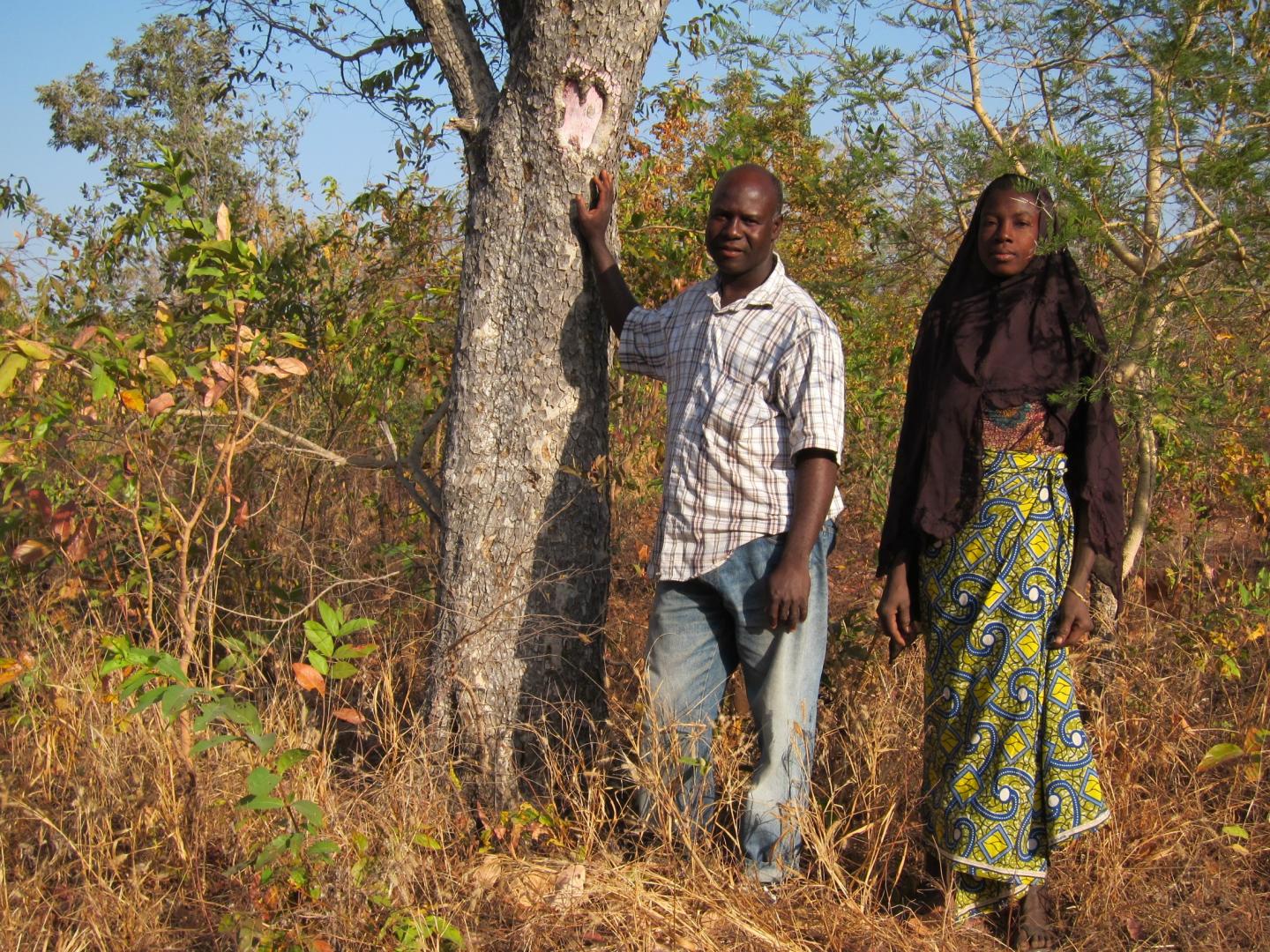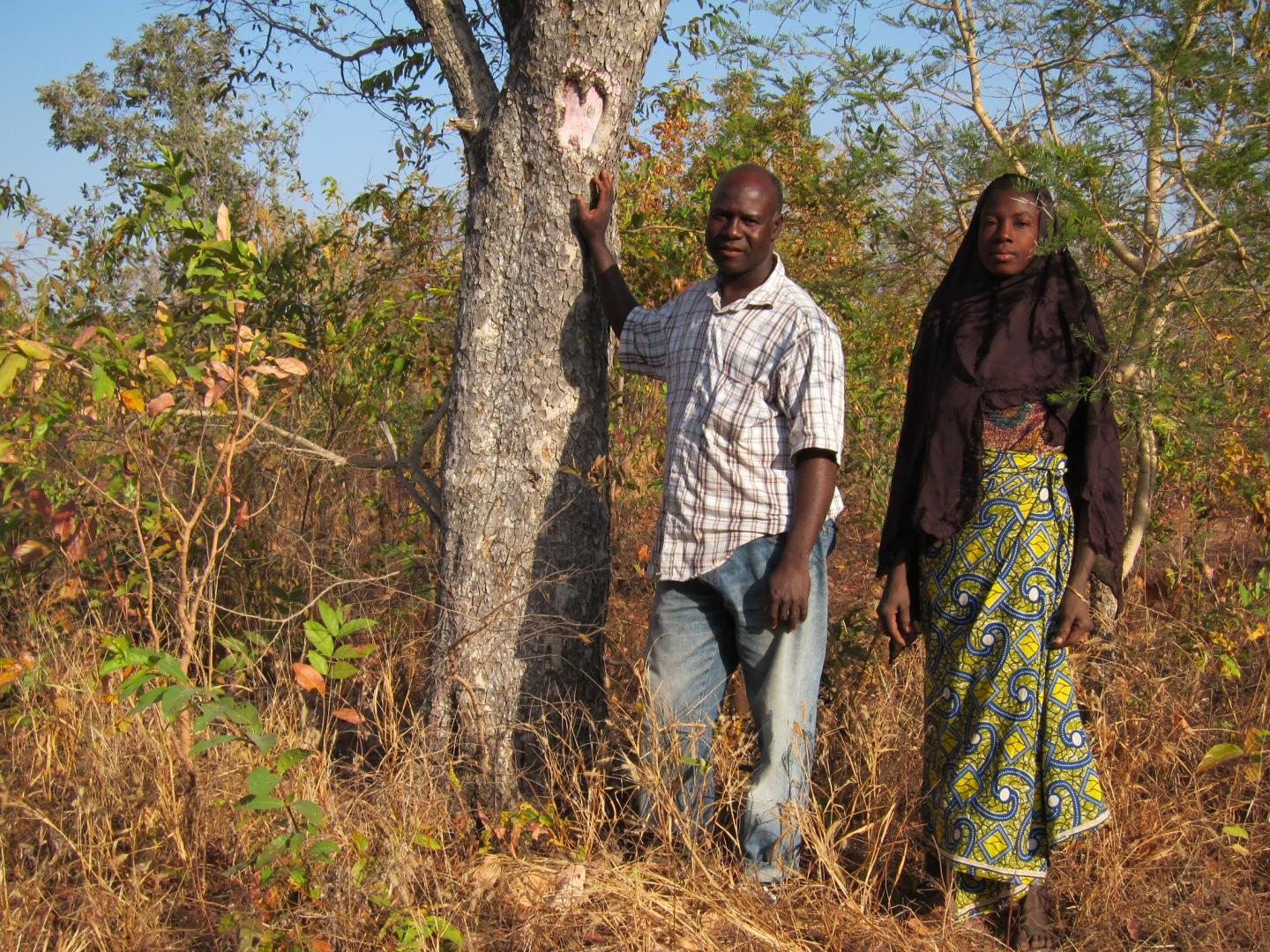
Credit: Daniel Miller
URBANA, Ill. – Trees may be easy to spot on the plains of Africa but they are often overlooked as a source of income for farmers. A University of Illinois study shows trees on farms may help reduce rural poverty and maintain biodiversity.
"Trees on farms in Africa often fall through the cracks — they're not forests and they're not agriculture," says U of I's Daniel Miller, who studies environmental politics and policy. "In our study, we found about one third of all rural farmers across five study countries have and grow trees on their farms. Among those farmers, trees on farms contribute 17 percent to their annual household income, so they're very important for generating economic benefits for households."
Miller's study used satellite images showing forest cover and nationally representative household-level data gathered from in-person interviews in Ethiopia, Malawi, Nigeria, Tanzania, and Uganda.
One thing he learned is that there are more trees on agricultural lands than expected–about a third to more than half of the rural households report having on-farm trees. Fruit trees and cash crop trees such as coffee trees were the two most popular types of trees. Tree for timber and fuel were only reported by 5 percent of the households.
Ecologically, trees could act as biodiversity corridors, Miller says. "One of the findings is that trees on farms are more prevalent near forests. They can provide wildlife or bird habitat linking different forested or natural areas, while at the same time providing income potential to poor farmers. They promise a potential win-win for conservation and development.
"Overall, the results suggest that trees on farms should be given more attention in agriculture, food security and poverty-related policy debates in Sub-Saharan Africa, particularly as the need to tackle climate change becomes more urgent," Miller says.
Trees can play an important role in both climate change adaptation and mitigation.
"Climate smart agriculture is a new buzzword," Miller says. "The World Bank has committed to making their agricultural investments climate smart by 2019. Trees are climate smart because they aren't as fragile as agricultural crops are to extreme shifts in climate. Oftentimes, trees can continue to produce when you might have a crop failure due to a drought. So, trees may provide a food source like mangoes or other fruit in times of difficulty."
Trees on farms can also help mitigate some of the negative effects of climate change.
"Trees sequester carbon through photosynthesis, so by not clearing them, you're not releasing the carbon into the atmosphere," Miller says. Because Miller looks at data from several angles, including the political implications, he is particularly excited about the national scale of the study. For policy makers, information presented at this scale–as done in this study — is especially useful in showing how trees benefit the five countries.
"One of the major findings from this work is that national-level differences explained a lot of the variation in whether people adopt or don't adopt trees on their farms," Miller says. "Particularly in Francophone countries, which I personally know better, central governments have historically claimed any tree as being the domain of forestry, which may shape farmer willingness to grow and use trees. For example, for a long time in Niger, farmers were wary of having trees on their farms because the central government had a legal right to come on their land and claim the trees as their own. It's a legacy of colonial law in those countries.
"More recently, the law in Niger changed to allow greater farmer control of trees. This change is a big reason for the exceptional re-greening that has happened across a large band of Niger," Miller says. "That's an extreme case, but it illustrates how national-level policies can affect farmer decision-making. Tanzania, with its record of community forest management, provides a contrasting case."
###
The research paper, "Prevalence, Economic Contribution, and Determinants of Trees on Farms across Sub-Saharan Africa," is published in Forest Policy and Economics and is written by Daniel Charles Miller; Juan Carlos Muñoz-Mora, and Luc Christiaensen.
The Program on Forests at the World Bank provided partial funding for this work.
Media Contact
Debra Levey Larson
[email protected]
217-244-2880
@ACESIllinois
http://aces.illinois.edu/
############
Story Source: Materials provided by Scienmag





